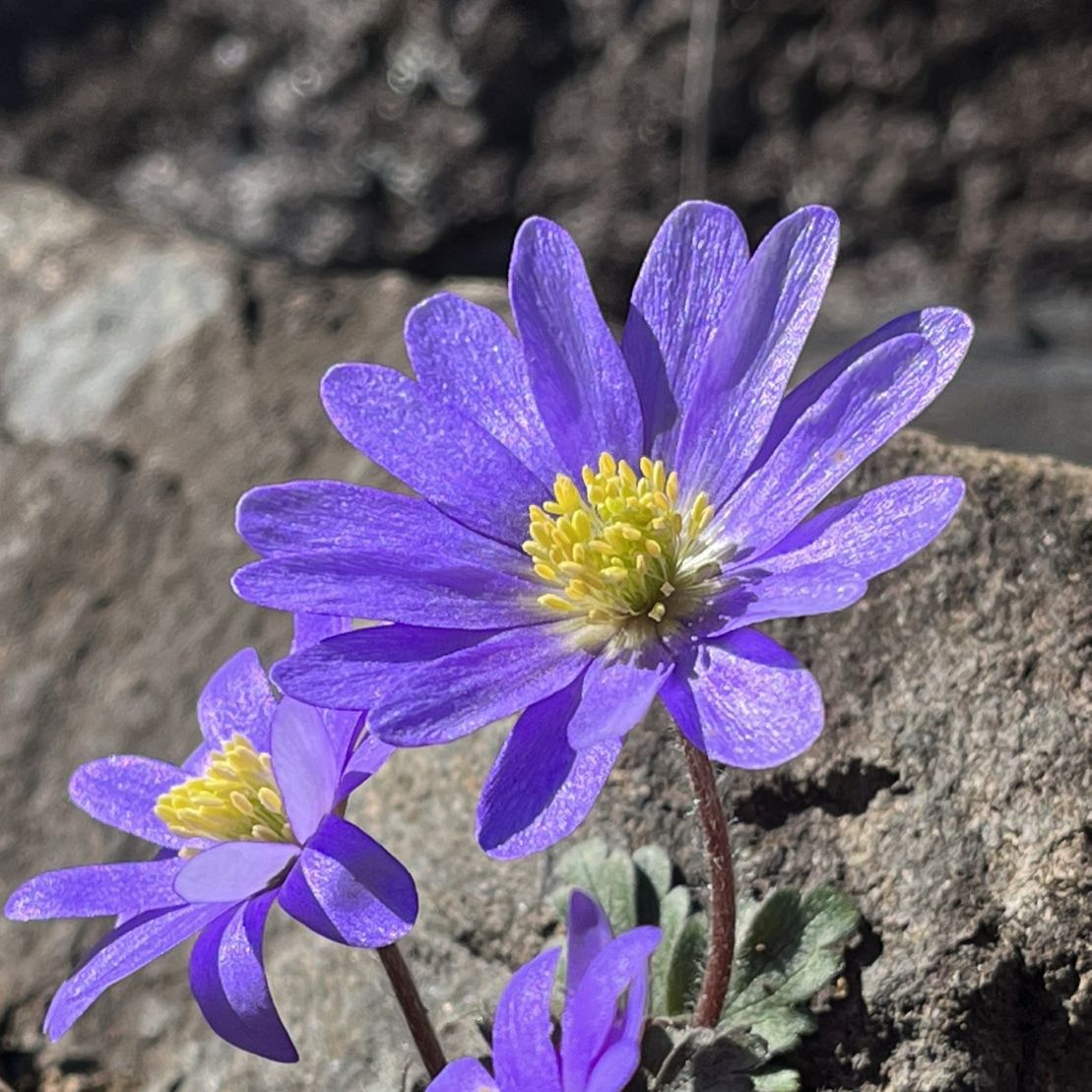アネモネ・ブランダは春に淡い青紫色の花が咲きます。夏に茎と葉を枯らして休眠。「スプリング・エフェメラル(春の妖精)」の一種です。
Balkan Anemone has pale violet flowers that bloom in spring. In summer, the stems and leaves die and the plant goes dormant. It is a type of “spring ephemeral”.
【仮名】アネモネ・ブランダ
【和名】–
【英名】Balkan Anemone, Grecian Windflower, Winter Windflower
【学名】Anemonoides blanda, Anemone blanda
【誕生】03/ ??
【開花】03, 04, 05月
【花色】White, Pink, Purple, Violet
アネモネ・ブランダ
アネモネ・ブランダの概要
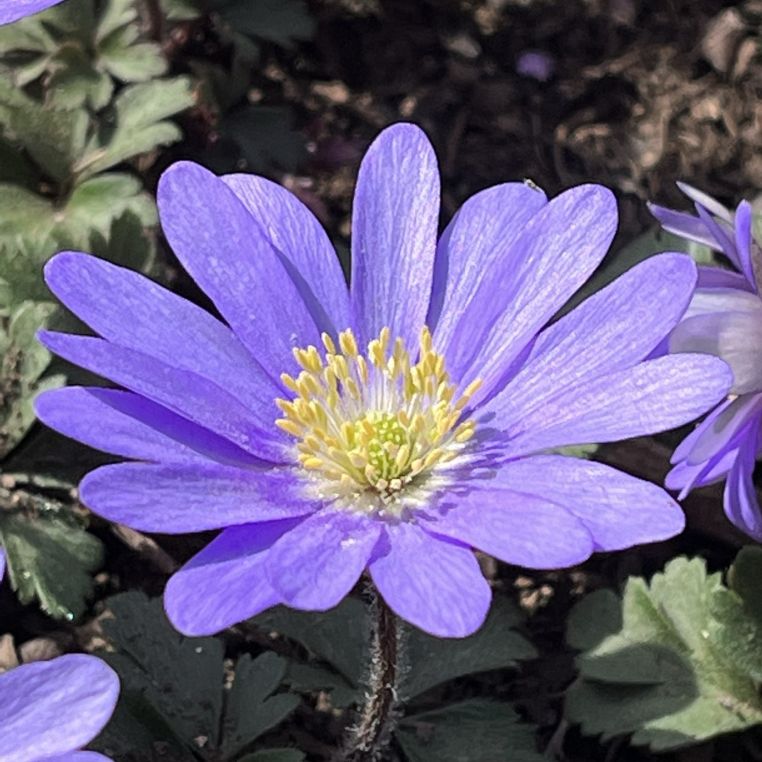
アネモネ・ブランダはキンポウゲ科の多年草。原産地は地中海沿岸の南東欧~中東です。かつてアネモネ属でしたが、2018年からアネモノイデス属に分類。秋に茎を伸ばし、葉を広げて冬を越し、春に花が咲いて塊茎で夏を越す「スプリング・エフェメラル(春の妖精)」の一種です。
アネモネ・ブランダの名前
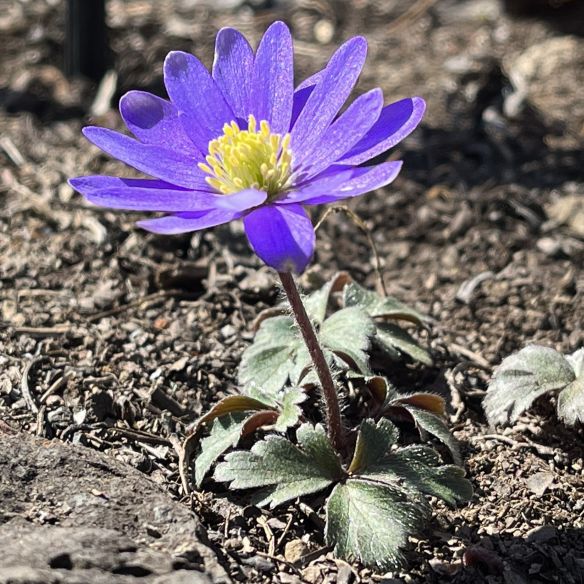
アネモネ・ブランダはかつての学名です。今の属名アネモノイデスは「アネモネのような」、種小名ブランダは「魅力的な」「穏やかな」という意味。英名のバルカンやグレシアンは原産地の南東欧に、ウインドフラワーは「春の風が吹くと、この花が咲く」という伝承に由来します。
アネモネ・ブランダの姿形
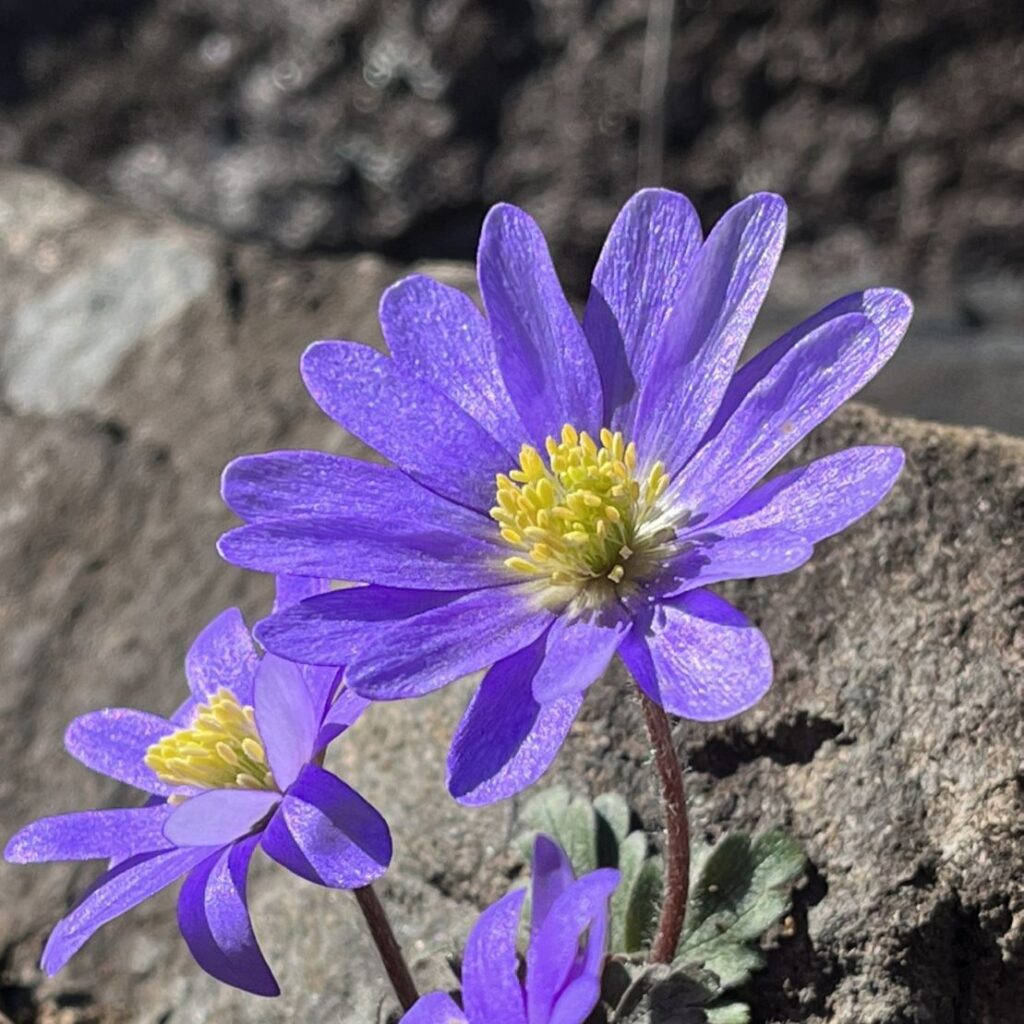
アネモネ・ブランダは夏に茎と葉を枯らし、地中の塊茎で休眠。秋~冬に細い茎を伸ばし、葉が根生します。葉は3出掌状複葉で小葉が深裂。春に淡い青紫色の花が咲きます。花弁のような萼片が10~20枚、雄しべと雌しべがたくさん。花後は微軟毛に覆われた卵形の痩果を結びます。
アネモネ・ブランダの利用
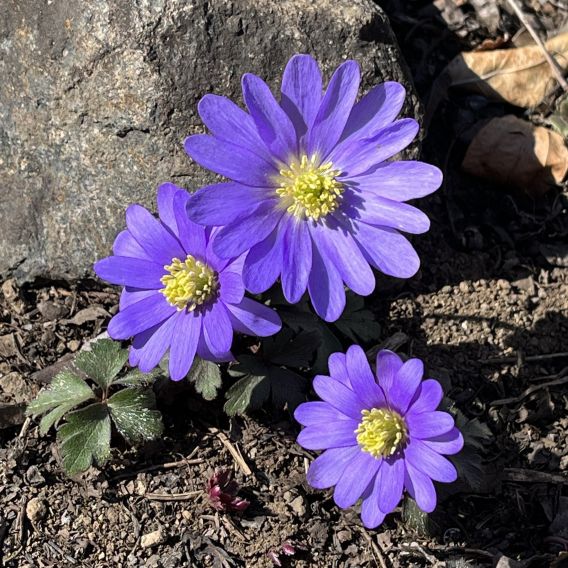
アネモネ・ブランダは花が美しい青紫色。庭植えや切り花のほか、昔は染色に用いられました。中世には薬草として痛風や頭痛に用いられましたが、全草にプロトアネモニンを含有。現在は毒草として知られ、皮膚に触れると炎症になり、誤って食べると嘔吐、下痢などを起こします。
Balkan Anemone
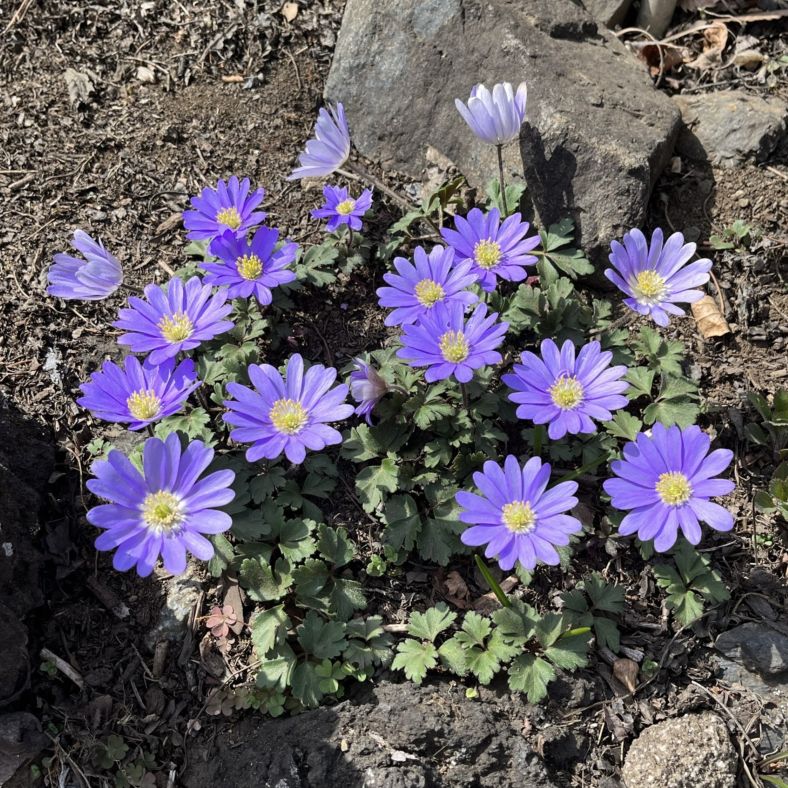
Balkan Anemone is a perennial plant of the Ranunculaceae family. It is native to southeastern Europe and the Middle East along the Mediterranean coast. It was once classified as an Anemone genus, but in 2018 it was classified as an Anemonoides genus. It is a type of “spring ephemeral” that grows its stems in autumn, spreads its leaves to survive the winter, blooms in spring, and survives the summer as a tuber.
The old scientific name of Balkan Anemone was Anemone blanda. The current genus name Anemonoides means “like anemone”, and the species name blanda means “charming” and “gentle”. The English names Balkan and Grecian come from the southeastern Europe where it originates. The name Windflower comes from the legend that “when the spring wind blows, this flower blooms”.
The Balkan Anemone loses its stems and leaves in summer and goes dormant in tubers underground. In autumn and winter, it grows thin stems and leaves that grow at the base. The leaves are trifoliate compound leaves with deeply lobed leaflets. Pale violet flowers bloom in spring. They have 10 to 20 petal-like sepals and many stamens and pistils. After flowering, they produce egg-shaped achenes covered with fine soft hairs.
The Balkan Anemone has beautiful violet flowers. In addition to being planted in gardens and as cut flowers, it was once used for dyeing. In the Middle Ages, it was used as a medicinal herb for gout and headaches, but in fact the entire plant contains protoanemonin, which is toxic. It is now known as a poisonous herb. It can cause inflammation on the skin, and vomiting and diarrhea if eaten by mistake.

